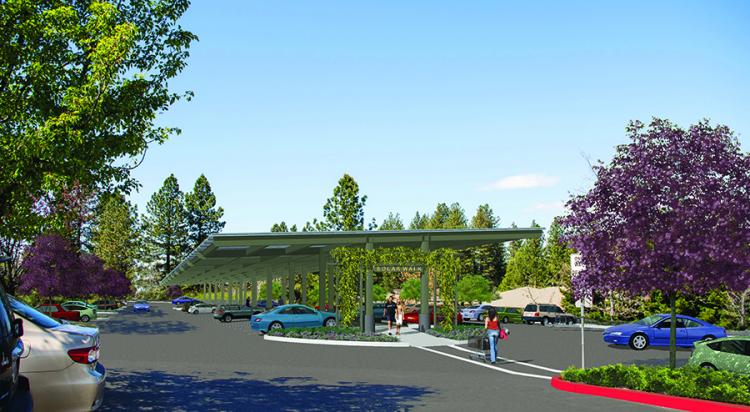Co-op’s Parking Lot Solar Reduces Energy Costs and Impacts

The use of energy-efficient, environmentally sensitive design has been a part of BriarPatch Co-op’s store on Sierra College Drive since its construction in 2006, when the co-op stepped up and built a LEED-certified “green” building. Located in Grass Valley, Calif., the co-op’s operations are humming, with a staff of 210 and a facility of 8,856 retail square feet supporting sales of $29.4 million in 2015.
Food markets invariably consume a large amount of energy because of the continuous operation of refrigeration systems. Plans to expand the co-op’s parking lot presented a perfect opportunity to construct a large overhead structure for solar panels, which will dramatically reduce our utility costs and carbon footprint.
The BriarPatch Co-op's 16,000-square-foot array with 680 solar panels will span almost the entire 300-foot length of the co-op’s westerly parking lot and will have a 5-degree tilt for ideal southern exposure. Construction of the array began in May 2016 and is scheduled for completion in October of this year.
BriarPatch Co-op is teaming with a local firm, California Solar Electric Company, to install the array. A 30-percent federal tax credit will defray the overall initial cost. The system will reduce the co-op’s annual electrical bill by $75,000—saving us $3 million over the guaranteed 25-year life of the panels. This solar system will be the largest parking-lot photovoltaic array in our area, and the first commercial solar project constructed over a parking lot in Nevada County.
California Solar owner Lars Ortegren says, “We are excited to partner with BriarPatch in realizing a significant investment in renewable energy while also improving a core part of our community—our local food co-op.”
BriarPatch Co-op’s new solar system will utilize industry-leading technology. The SunPower E20 solar panels offer high efficiency with a minimal footprint, producing 70 percent more electricity than conventional panels. Each panel has 128 cells and produces 435 watts; this results in an array wattage rating of 295,800 watts (DC). In terms of carbon dioxide (CO2) emissions, the new system will generate enough power to equal the CO2 offset of 61,926 trees over the 25-year lifespan of the system, or the equivalent of CO2 emissions from 800 barrels of oil consumed.
The new solar array will also allow for future renewable energy expansions, starting with the addition of vehicle-charging stations. These stations will make the choice of an electric vehicle a bit more attractive by making it possible to conveniently charge it at our local food market.
There’s a real possibility that, in the future, BriarPatch Co-op could add more solar panels—on the building roof, and/or over other portions of the parking area—and consequently be able to generate much more of its electricity from its own system.
This project is a great example of how renewable energy can keep our community strong by providing local businesses with multi-use design solutions that maximize long-term savings while reducing environmental impacts.







